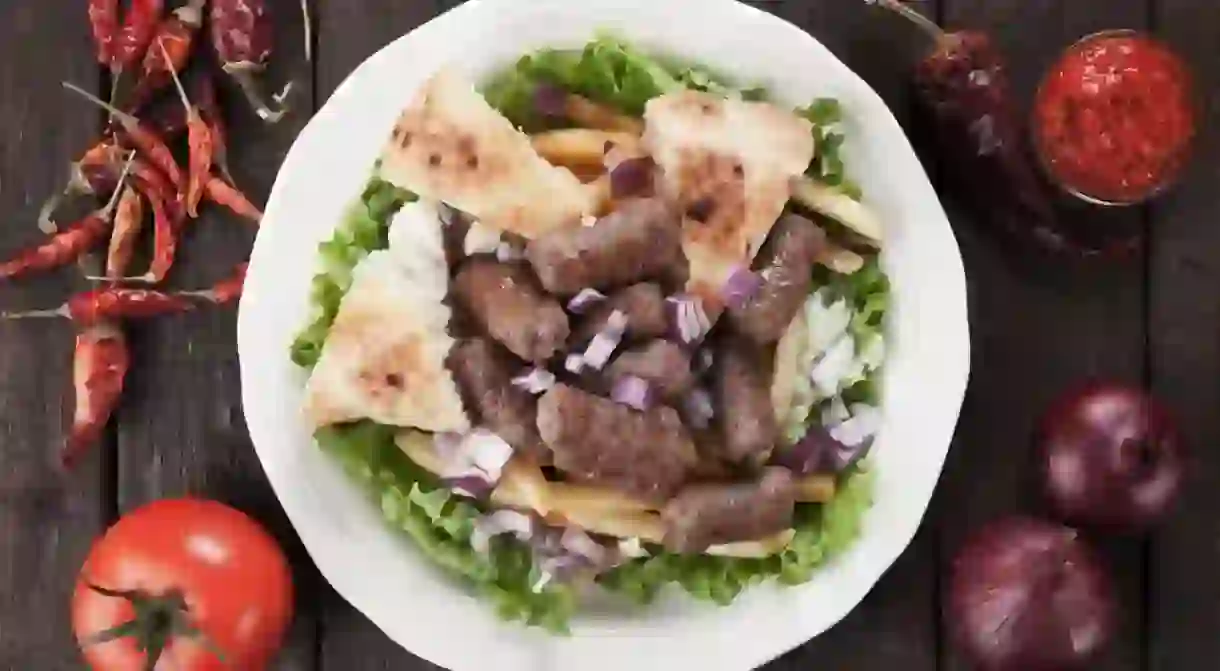Traditional Bosnian Dishes You Need to Try

Traditional Bosnian food shares similarities with Turkish and Mediterranean cuisine, a legacy of 400 years of Ottoman rule. Typical dishes include organic meat, usually lamb or beef to meet Halal requirements, slow-cooked in their juices with a seasoning of spices. Meals tend to be light with a generous portion of vegetables. Here are the top delicious dishes for you to try on your next visit.
Did you know you can now travel with Culture Trip? Book now and join one of our premium small-group tours to discover the world like never before.
Cevapi
Cevapi are small, oblong-shaped kebabs from lamb and beef served in somun (Bosnian pita bread) with raw onions. Locals eat this for lunch, dinner, or as a snack. Chefs grill the meat and serve between five to ten individual kebabs on a plate with a sour cream sauce. Each restaurant cooks and seasons in a different way, making each cevapi slightly different. You can also find regional variances that use mutton or lamb.
Burek
The Burek comes from Turkey brought to the Balkans by the Ottoman. Bureks have a flaky pastry with a meat, cheese, or spinach filling. Almost every bakery in the country sells this greasy snack, which is sometimes sold individually or by weight. Bosnians and tourists tend to have a love-hate relationship with it. On the one hand, a delicious and filling snack, on the other, they’re very greasy and full of fat.
Begova Corba
Begova Corba, or Bey’s Soup in English, was an Ottoman favourite. Slow-cooked chicken and vegetables such as carrots, potatoes and celery, boil into a thick, creamy stew making a warm appetiser. Bey’s is often served with a sour cream or sauce in a clay bowl and locals cook and eat this soup especially during holidays and festivities.
Klepe (Bosnian minced meat dumplings)
The Balkans are great at dumplings, Klepe being the Bosnian version. Imagine a dough stuffed with either tangy cheese or meat (lamb or beef) before being steamed to create a soft ravioli-like texture. Klepe comes with a yoghurt or garlic sauce and almost melts in the mouth.
Dolma
Dolma is another dish found around the Balkans and Mediterranean, Bosnia adds its own delicious twist. Vegetables, such as eggplant, peppers and zucchini, are stuffed with either meat or rice and seasoning. Bosnians serve meat dolma warm, often with a lemon-based sauce and rice dolma at room temperature with a yoghurt-based garlic sauce. In Mostar, a regional speciality is the Sogan Dolma using an onion as the base vegetable.
Bosnian bean soup
Imagine a warm soup with soft beans in a clay bowl on a chilly winter’s day. Grah is a traditional Bosnian bean soup using Peruano beans as the main ingredients, served alongside bell peppers, onions and carrots. Often slow-cooked beef is added to the soup, creating a healthy warm meal for even the coldest of days.
Bosanski Lonac
Bosanski Lonac is said to be one of the national dishes. The stew is unique to Bosnia and uses a particular way to prepare the meal. Cooks put large chunks of both meat and vegetables in alternating layers until the pot is full. After simmering and cooking for what may feel like forever, the delicious broth and stew comes as a hearty meal.
Tufahija
The Ottomans liked their sweet desserts and introduced Tufahija to Bosnia. An apple boiled in sugar and stuffed with walnuts is served with its syrup and whipped cream in a large glass. Super sweet Tufahija complements the strong, bitter taste of Bosnian coffee and locals tend to enjoy both at the same time.
Ustipci
Every Ustipci is different. Arguably the most delicious treat in Bosnia is Ustipci, or small balls of fried dough with either a sweet or savoury filling. Recipes pass from generation to generation making each version slightly different to the next. Sweet ones use jam or honey while their savoury counterparts have cheese or meat. As you eat the small, crispy and somewhat greasy snack, you’ll notice a soft bread texture when biting down and an explosion of flavour as the contents burst into your mouth. Locals often snack on this with tea or coffee.
Baklava
Baklava, found across the Balkans and Caucasus, is a dessert treat made from sheets of filo pastry. Bosnian Baklava looks a bit like a small cake with layers of nuts, syrup and honey. As the Ottomans expanded their Empire, they brought this favourite sweet, which has now evolved into Bosnia’s own. The high sugar content and sweet flavour make this a perfect side to go with your coffee.
Interested in exploring more of the Balkans? Join our eight-day premium Croatia trip and travel down the Dalmatian Coast from Split to Dubrovnik. For more foodie adventures, book our four-day Mini Trip to Bologna or our four-day Mini Trip to the Basque Country in Spain – you’ll immerse yourself in regional cuisine with the help of our Local Insiders.













